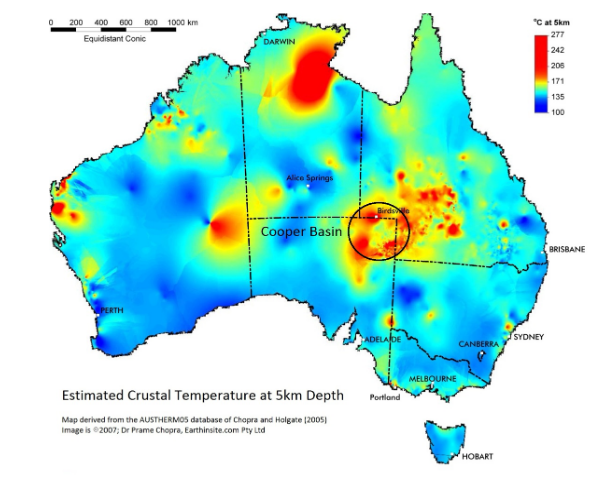I see A LOT of misconceptions have been posted here about Geothermal energy.
I will try to address most of them and hopefully people might take this updated data on Geothermal more seriously.
First off, Geothermal is NOT constricted to only a few regions when it comes to electricity production. It can be accessed in the oceans fairly easily and literally anywhere else if we dig deep enough (and with lots of less effort with preexisting geothermal wells, etc.) :
http://www.geothermal-energy.org/pdf/IGAstandard/WGC/2015/37011.pdf
Heating and cooling (which accounts for about 40% of humanity's energy budget), is pretty much accessible in the form of Geothermal across the globe:
https://education.nationalgeographic.org/resource/geothermal-energy/#:~:text=Almost%20anywhere%20in%20the%20world,C%20(302%C2%B0%20F).
There are a lot of volcanoes (inactive and active) across the globe that can be used for Geothermal power generation.
The Yellowstone super volcano can basically power the entire globe twice over:
https://www.forbes.com/sites/robinandrews/2017/09/29/yellowstone-supervolcano-could-power-the-entire-planet-twice-over/
Also, according to MIT study from 2006, it was concluded that the Earth has 13000 zettajoules of Geothermal energy available (this was before newer studies determined that the core is actually HOTTER) and that with the technology available at the time (2006), we could easily extract 200 zettajoules of power (human civilization was using at the time 0.5 zettajoules per year... and accounting for 1 third of humanity that doesn't have access to electricity, this number would have to rise to 0.65 zettajoules - and if we take into account that its been 16 years since then and overall energy consumption increased by roughly 55%, the total amount of zettajoules humanity would be using in the world today could be estimated at approximately 1 zettajoules per year (also including one third of humanity that does not have access to electricity – so 1 zettajoules per year would be a scenario where ENTIRE humanity has access to electricity).
https://energy.mit.edu/wp-content/uploads/2006/11/MITEI-The-Future-of-Geothermal-Energy.pdf
So, we already had the ability to tap into 200 years worth of base load geothermal power since 2006... and eventually into 2000 years worth of power with improved technologies.
Now, what most people here ignore is that Geothermal can in fact be accessed anywhere in the globe if we dig deep enough (which, lets be fair, is not too much of a hassle with modern technology because if the oil/gas companies could dig kilometers deep into the ground for oil and gas 100 years ago, then doing the same, or a little deeper for Geothermal would hardly be the problem).
Furthermore, Geothermal has lower operational costs than any other energy source on the planet ranging between \$19 and \$36 per MWh (especially compared to Nuclear which costs between \$112 and & \$189 per MWh), pays for itself ENTIRELY (yes, this includes cost of digging, etc.) in 3-7 years, is far more reliable, can last over 100 years per power plant if adequately maintained, has no running fuel costs, is cheaper to run and uses smaller amount of land area compared to most other energy sources:
https://www.energy.gov/eere/geothermal/geothermal-faqs
https://www.energy.gov/eere/geothermal/geothermal-power-plants-minimizing-land-use-and-impact#:~:text=An%20entire%20geothermal%20field%20uses,acreages%20for%20mining%20their%20fuel.
The first Geothermal power plant ever constructed in Italy in 1913 is still in operation today with vastly expanded power generation:
https://www.power-technology.com/analysis/oldest-geothermal-plant-larderello/
Adding to this, all oil and gas wells (along with the personnel and their skills) throughout the globe can be fairly easily transferred/converted into Geothermal for both electricity and heat production for HALF as much money/cost than it would take to decommission them.
A company in Australia is also looking to use its technology to convert coal fired power plants into Geothermal power stations too.
Geothermal brines are also rich in various minerals such as Lithium. In fact, in the USA, a mere handful of Geothermal power plants can supply the entire nation with more lithium it could ever hope to use (same for the Geothermal power plant in Cornwall).
More info can be found here on all these points I mentioned:
https://www.offshore-mag.com/pipelines/article/16762144/geothermal-power-an-alternate-role-for-redundant-north-sea-platforms
https://www.pressandjournal.co.uk/fp/business/local/3028309/plan-to-repurpose-rigs-for-geothermal-energy/
https://www.energy.gov/eere/articles/doe-awards-84-million-accessing-geothermal-potential-abandoned-oil-and-gas-wells
https://techxplore.com/news/2022-02-quaise-energy-power-geothermal-drilling.html
https://www.boisestate.edu/news/2022/03/21/how-a-few-geothermal-plants-could-solve-americas-lithium-supply-crunch-and-boost-the-ev-battery-industry/
https://www.euractiv.com/section/energy/news/game-changer-for-geothermal-energy-as-uk-plant-unlocks-vast-supply-of-lithium/
People seem to be generally operating on outdated information.
Here's an additional article on Supercritical Geothermal and how it could power quite literally EVERYTHING and the main reason its development progressed so slowly (hint: lack of funding, not technology or accessibility) :
https://spheresofinfluence.ca/geothermal-energy-can-the-forgotten-renewable-make-its-mark/
https://www.energymonitor.ai/tech/renewables/supercritical-geothermal-could-power-everything
One last thing: The biggest obstacle for Geothermal energy utilization across the globe are not accessibility of geothermal resources or technological capability... its lack of funding.
Compared to any other energy source, Geothermal is the LEAST funded one of all because myths and outdated information which actually hold no credible accuracy (and are easily countered with more up to date info) are stuck in the minds of many investors (and general population at large).
